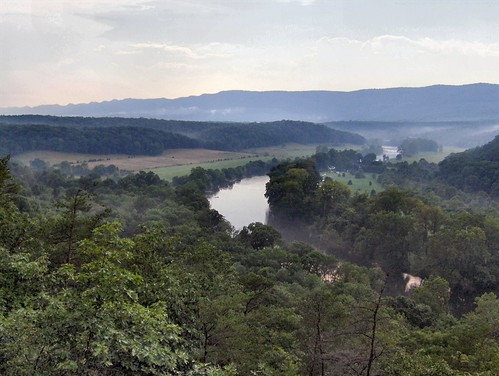Oh Shenandoah,
I long to see you,
And hear your rolling river

The Shenandoah River is one beautiful lady
According to wiki:
Shenandoah was first printed as part of William L. Alden's article "Sailor Songs", in the July 1882 issue of Harper's New Monthly Magazine.
The song had become popular as a sea-chanty with British sailors by the 1880s.
Alfred Mason Williams' 1895 Studies in Folk-song and Popular Poetry called it a "good specimen of a bowline chant". In his 1931 book on sea and river chanteys entitled Capstan Bars, David Bone wrote that "Oh Shenandoah" originated as a river chanty or shanty and then became popular with sea-going crews in the early 19th century.
The U.S. congressman for Missouri Ike Skelton noted in 2005 that local artist George Caleb Bingham immortalized the jolly flatboatmen who plied the Missouri River in the early 19th century; these same flatboatmen were known for their chanties, including the lovely "Oh Shenandoah". This boatmen's song found its way down the Missouri and Mississippi Rivers to the American clipper ships, and thus around the world.
Set in the heart of the Shenandoah Valley, Washington & Lee University chorus singers and bands play this song in homage to their alma mater. The University names the "Washington and Lee Swing" as their fight song, but the student body, who lived in the Blue Ridge for at least four years, considers this one of their most nostalgic songs.
The Virginia Military Institute Regimental Band and Glee Club frequently perform this song, as it is widely considered that school's theme song. In this interpretation, Shenandoah refers to the home of the Virginia Military Institute and expresses the longing that a cadet experiences once he is reminded of the valley's beauty by his travels across the 'wide Missouri'.
Oh Shenandoah has been recorded by 63 different artists and groups over the years, from Bob Dylan and Jerry Garcia, Michael Landon on The Ponderosa to Bing Crosby, Harry Belafonte and the Harvard Glee Club!
